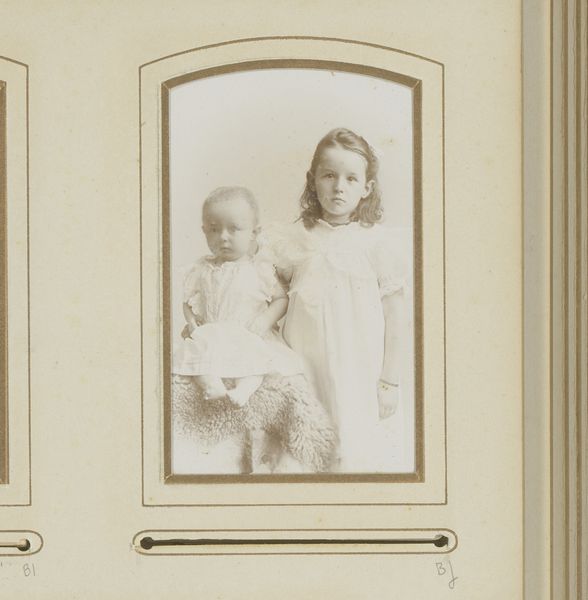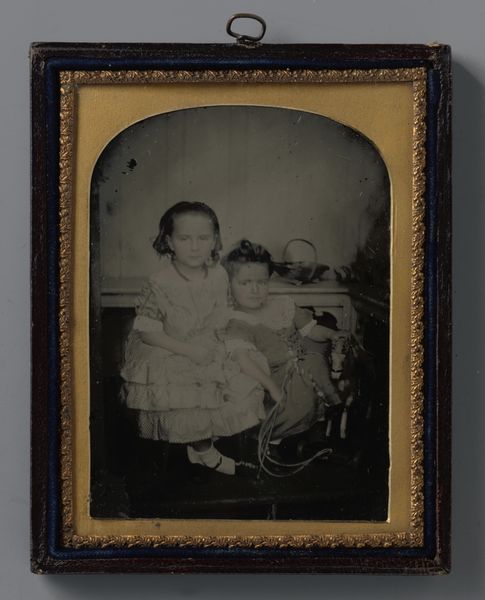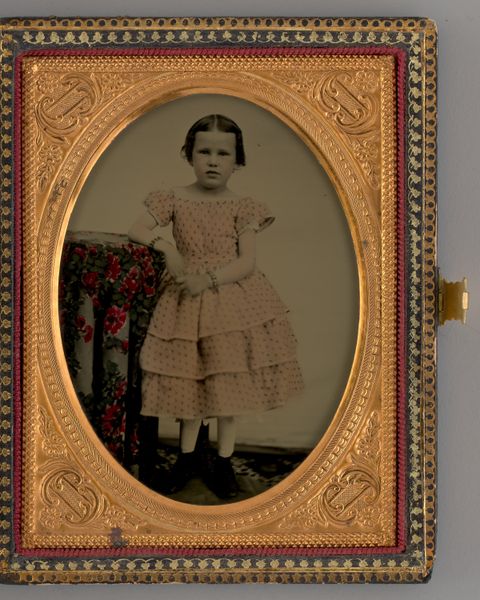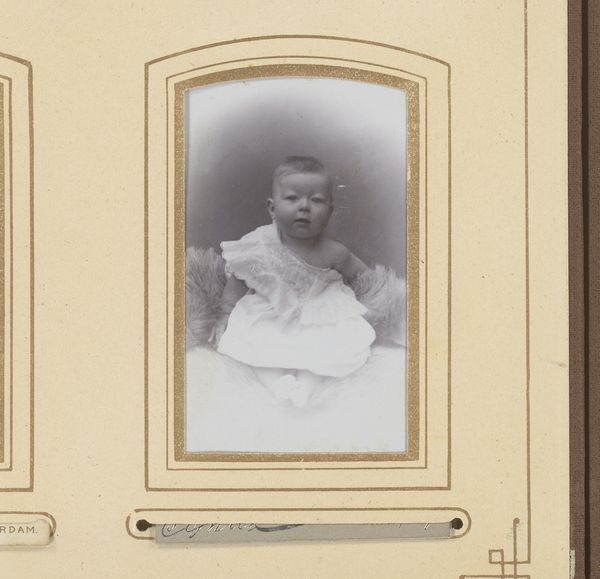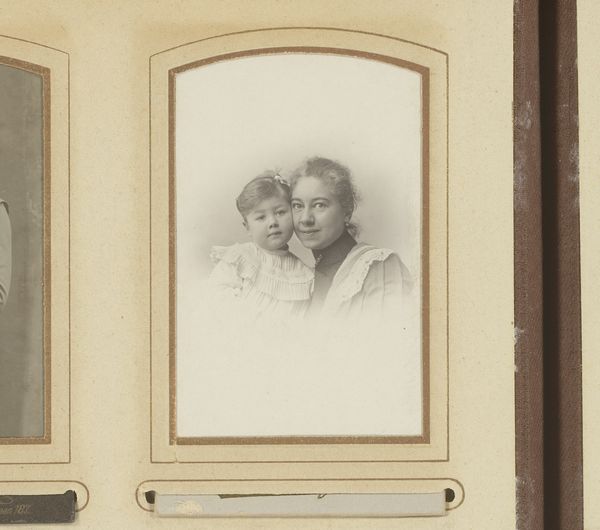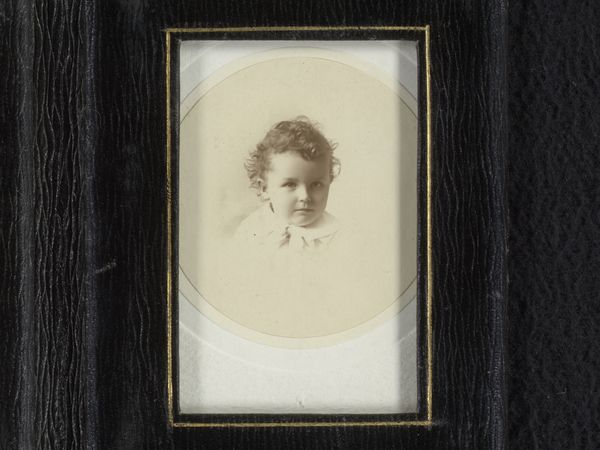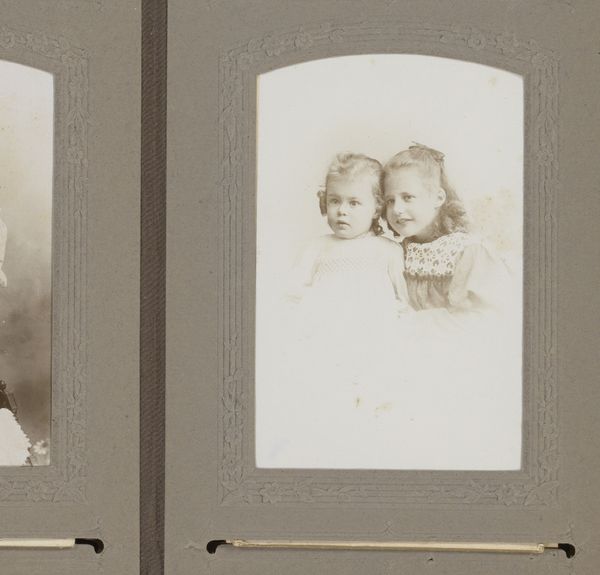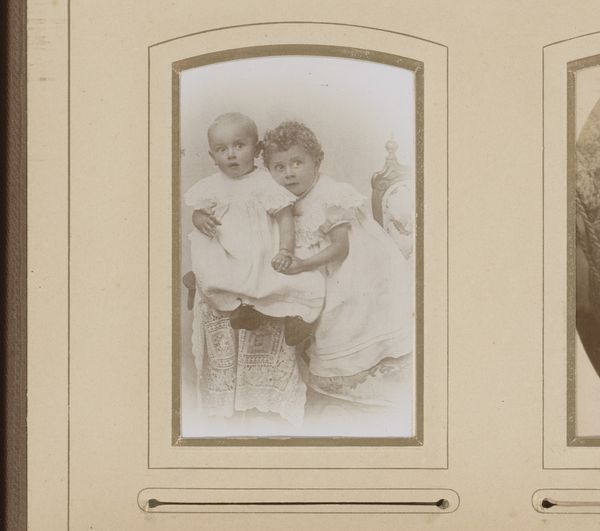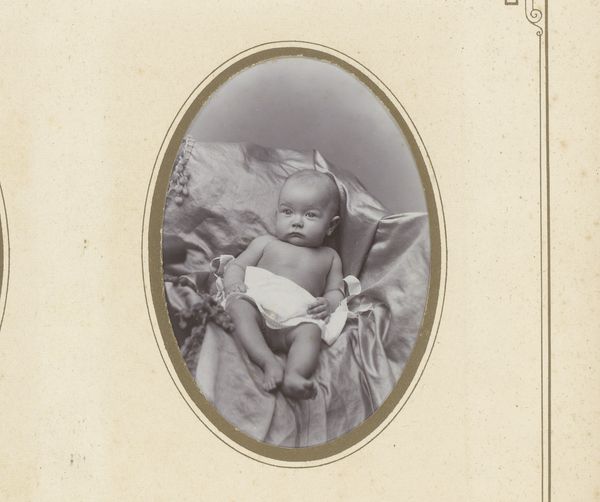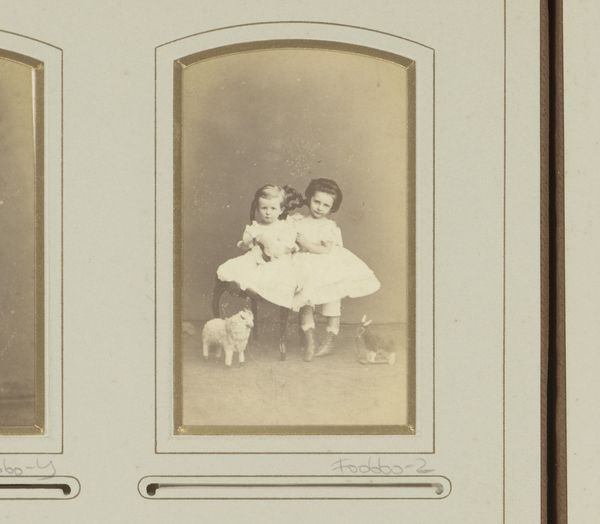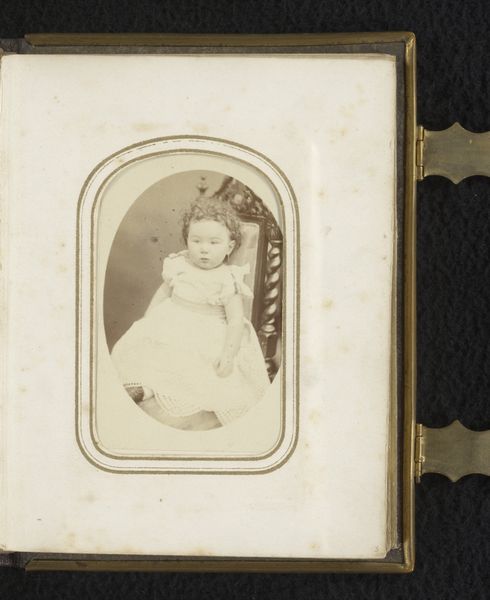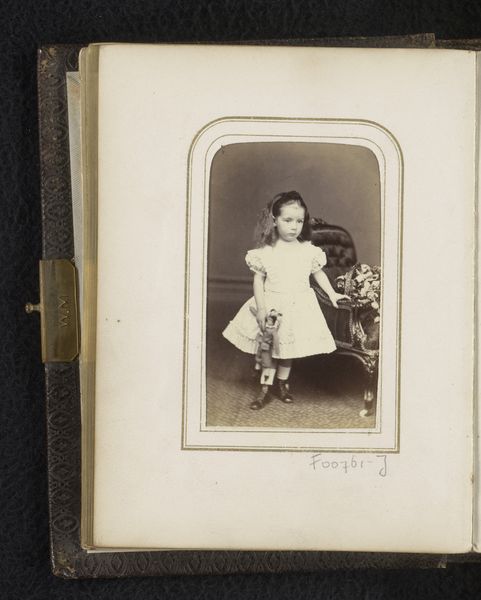
photography
#
portrait
#
studio photography
#
contemporary
#
figuration
#
photography
Dimensions: image: 78.74 × 78.74 cm (31 × 31 in.) framed: 85.09 × 85.09 cm (33 1/2 × 33 1/2 in.)
Copyright: National Gallery of Art: CC0 1.0
Curator: Carrie Mae Weems’s photograph, titled "May Flowers," thought to be from sometime between 2002 and 2013, is a beautiful, sepia-toned work. What’s your initial read? Editor: There is an undeniable stillness about this composition. The subdued palette and the subjects' poses create an air of introspective melancholy. The tondo format adds to this enclosed, dreamlike feeling. Curator: I see what you mean. This image is from a body of work in which Weems grapples with themes of youth, beauty standards, and, perhaps more significantly, how race and class intersect to shape experience. The setting might suggest the outdoors, but it’s controlled, maybe a stage. These children are performing girlhood. Editor: That’s a crucial point. If we analyze their dresses, we see varied patterns and textures, all rendered in subtle tonal shifts that nonetheless differentiate one from another. Their clothes subtly speak of socio-economic status but read formalistically as patterns within patterns. Curator: Precisely! Consider the floral crowns, too. Are they genuine symbols of innocence or a constructed representation of it? Are these adornments provided and placed upon them? Weems's photography often considers how such expectations of idealized beauty impact women and girls of color, what labor and access lies behind those materials. Editor: There's a complexity to how the composition guides the eye, leading the viewer on a specific journey. Note the placement of each child—their gaze either directly at us, above or askew. Their direct look outward challenges any romantic notions we might project. Curator: Right, her deliberate choices highlight the active participation of these young girls in constructing their image, resisting being merely passive subjects. How do they feel about participating in these structures? What expectations were placed on the artist too? Editor: Thinking structurally then, that circular format encloses everything; directing and condensing our interpretations of Weems’ work on girlhood and beauty. Curator: I agree. I find that understanding the context behind her artistry amplifies the emotional depth, providing layers to our aesthetic experience. Editor: I appreciate how focusing on the visual structure allows us to decode so many facets related to representation and identity.
Comments
No comments
Be the first to comment and join the conversation on the ultimate creative platform.
